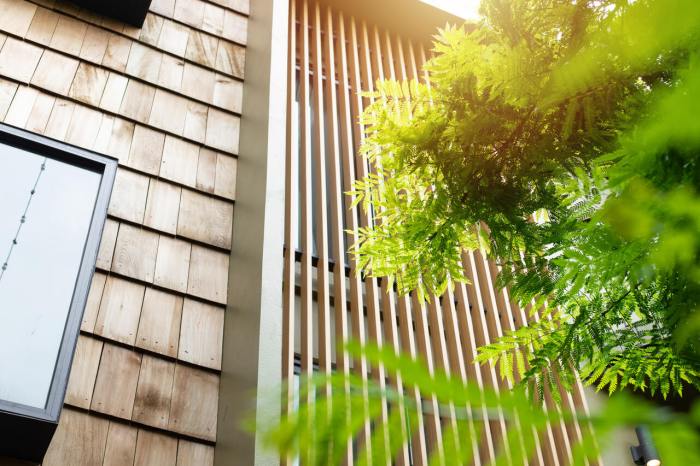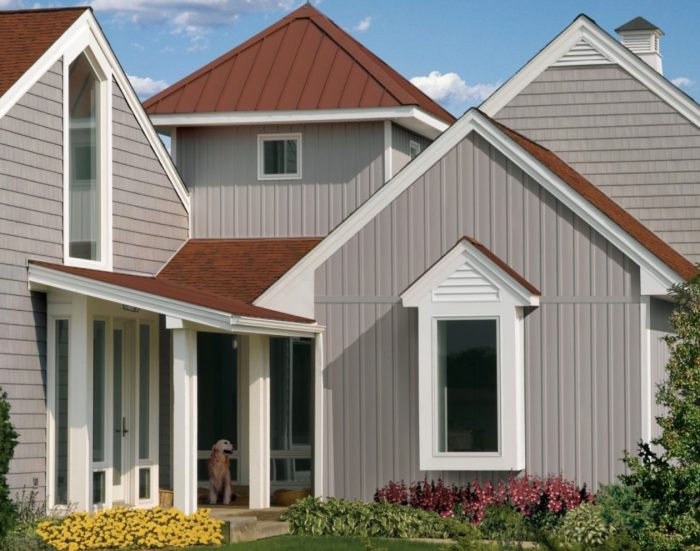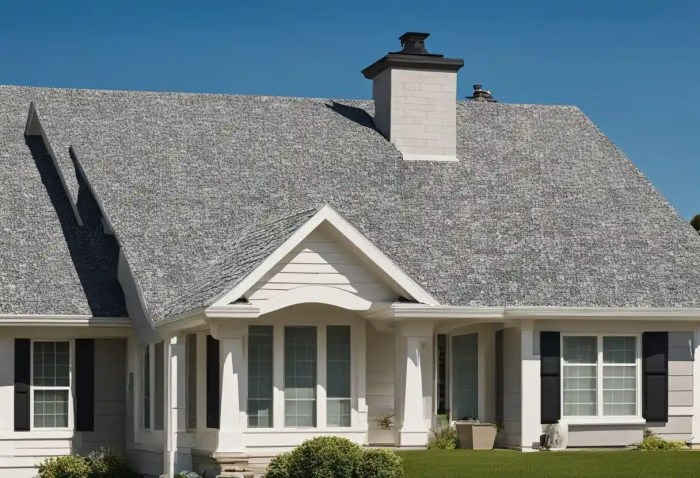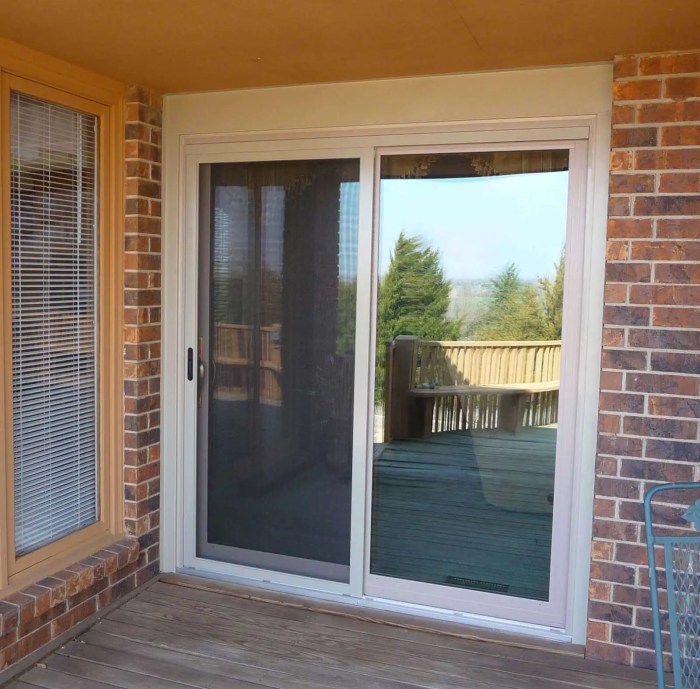Exploring Eco-Friendly Siding Options: A Comprehensive Guide
As eco-friendly siding options become increasingly popular, it's crucial to understand the various materials and practices involved. This guide delves into the world of eco-friendly siding, shedding light on its benefits, sustainability, and energy efficiency. Get ready to discover a greener way to enhance your home's exterior!
Types of Eco-Friendly Siding Materials

When it comes to eco-friendly siding options, there are several materials available in the market that offer sustainability and durability while reducing environmental impact.
1. Wood Siding
Wood siding is a popular choice for eco-friendly homes due to its renewable nature and natural appearance. It is biodegradable, recyclable, and energy-efficient, making it an environmentally friendly option. However, wood siding requires regular maintenance, such as staining or painting, to prevent rot and decay.
2. Fiber Cement Siding
Fiber cement siding is a composite material made from cement, sand, and cellulose fibers. It is durable, fire-resistant, and low-maintenance, making it a sustainable option for eco-conscious homeowners. Fiber cement siding is also resistant to pests and harsh weather conditions, offering long-term durability.
3. Recycled Metal Siding
Recycled metal siding, such as steel or aluminum, is a sustainable choice as it can be recycled at the end of its lifespan. Metal siding is durable, fire-resistant, and requires minimal maintenance. It is also energy-efficient and can help reduce heating and cooling costs in the long run.
4. Engineered Wood Siding
Engineered wood siding is made from wood fibers and resin, offering the look of natural wood with added durability and stability. It is a sustainable option that reduces waste by utilizing wood scraps and recycled materials. Engineered wood siding is resistant to moisture, rot, and pests, making it a long-lasting eco-friendly choice.
5. Stone Siding
Stone siding is a natural and durable option for eco-friendly homes. It is fire-resistant, pest-resistant, and provides excellent insulation properties, reducing energy consumption. While stone siding may have a higher upfront cost, its longevity and low maintenance requirements make it a sustainable choice in the long term.
Sustainable Sourcing and Manufacturing Processes
When it comes to eco-friendly siding options, sustainable practices in both the sourcing of materials and manufacturing processes play a crucial role in reducing the environmental impact of these products.
Sustainable Sourcing of Materials
One of the key aspects of eco-friendly siding is the sustainable sourcing of materials. This involves using renewable resources, such as wood from responsibly managed forests, recycled materials, or materials that have minimal impact on the environment during extraction.
- Using reclaimed wood or recycled materials helps reduce the demand for new resources and minimizes waste that would otherwise end up in landfills.
- Choosing materials from certified sustainable sources ensures that forests are managed responsibly, promoting biodiversity and conservation efforts.
Environmentally-Friendly Manufacturing Processes
Manufacturing processes for eco-friendly siding options are designed to minimize energy consumption, reduce emissions, and lower overall environmental impact.
- Utilizing energy-efficient production methods and technologies helps reduce the carbon footprint of the manufacturing process.
- Recycling water, using non-toxic chemicals, and implementing waste reduction strategies are common practices in eco-friendly siding manufacturing.
Certifications and Standards
Certifications and standards play a crucial role in ensuring the sustainability of eco-friendly siding products. These certifications provide consumers with assurance that the products meet specific environmental criteria and are produced using eco-friendly practices.
- Look for certifications such as Forest Stewardship Council (FSC), Sustainable Forestry Initiative (SFI), or Cradle to Cradle (C2C) to verify the sustainability of eco-friendly siding materials.
- Adhering to these standards not only benefits the environment but also helps consumers make informed decisions when choosing eco-friendly siding products for their homes.
Energy Efficiency and Insulation

When it comes to eco-friendly siding options, energy efficiency and insulation are key factors to consider. Not only do these materials help reduce environmental impact, but they can also contribute to significant cost savings in terms of heating and cooling expenses for a building.
Energy Efficiency Benefits
- Eco-friendly siding materials, such as insulated vinyl siding or fiber cement siding, help create a thermal barrier for the building, preventing heat loss in winter and heat gain in summer.
- This results in a more stable indoor temperature, reducing the need for excessive heating or cooling, which ultimately leads to lower energy consumption.
- By improving the overall energy efficiency of a building, eco-friendly siding options can help lower carbon emissions and decrease the reliance on fossil fuels for heating and cooling.
Insulation Properties of Eco-Friendly Siding
- Fiber cement siding is known for its excellent insulating properties, helping to regulate indoor temperatures and reduce energy usage.
- Wood siding, when properly installed and maintained, can also provide good insulation and thermal resistance for a building.
- Insulated vinyl siding, with added layers of foam backing, offers enhanced insulation, keeping a home comfortable and energy-efficient all year round.
Cost-Saving Benefits
- By choosing eco-friendly siding materials that provide good insulation, homeowners can experience reduced heating and cooling costs throughout the year.
- Less reliance on artificial heating and cooling systems means lower energy bills and a more sustainable living environment.
- Over time, the cost savings from reduced energy consumption can offset the initial investment in eco-friendly siding, making it a financially smart choice for homeowners.
Installation and Maintenance Considerations
When it comes to eco-friendly siding options, the installation process plays a crucial role in ensuring the longevity and effectiveness of the materials. Additionally, proper maintenance is essential to prolong the lifespan of these sustainable siding choices.
Installation Process
- It is recommended to hire professional installers with experience in working with eco-friendly siding materials to ensure proper installation.
- Follow manufacturer guidelines and specifications for installation to guarantee the best performance of the siding.
- Ensure that the structure beneath the siding is in good condition and properly prepared to support the new eco-friendly siding.
Maintenance Tips
- Regularly clean the siding using eco-friendly cleaning products to remove dirt, debris, and mold that can accumulate over time.
- Inspect the siding annually for any signs of damage or wear and tear, and address any issues promptly to prevent further damage.
- Consider applying a fresh coat of sealant or paint every few years to protect the siding from the elements and maintain its appearance.
Considerations and Challenges
- Some eco-friendly siding materials may require specific maintenance procedures or products, so it's essential to follow the manufacturer's recommendations.
- Climate and environmental factors can impact the maintenance needs of eco-friendly siding, so adjustments may be necessary based on the location of the property.
- Proper installation and maintenance of eco-friendly siding can help prevent issues such as warping, fading, or deterioration, ultimately extending the lifespan of the siding.
Final Conclusion
In conclusion, eco-friendly siding options offer a sustainable and energy-efficient choice for homeowners looking to reduce their environmental impact. By exploring the diverse range of materials and installation considerations, you can make an informed decision that benefits both your home and the planet.
Embrace eco-friendly siding today for a brighter, greener tomorrow.
General Inquiries
Are eco-friendly siding options more expensive than traditional materials?
Eco-friendly siding materials can initially have a higher upfront cost, but the long-term savings in energy efficiency and maintenance often make them a cost-effective choice.
Do eco-friendly siding options require special maintenance?
While eco-friendly siding may have specific maintenance requirements, they are generally easy to care for with regular cleaning and inspections.
How do eco-friendly siding options contribute to energy efficiency?
Eco-friendly siding materials provide better insulation, reducing energy consumption for heating and cooling your home.




